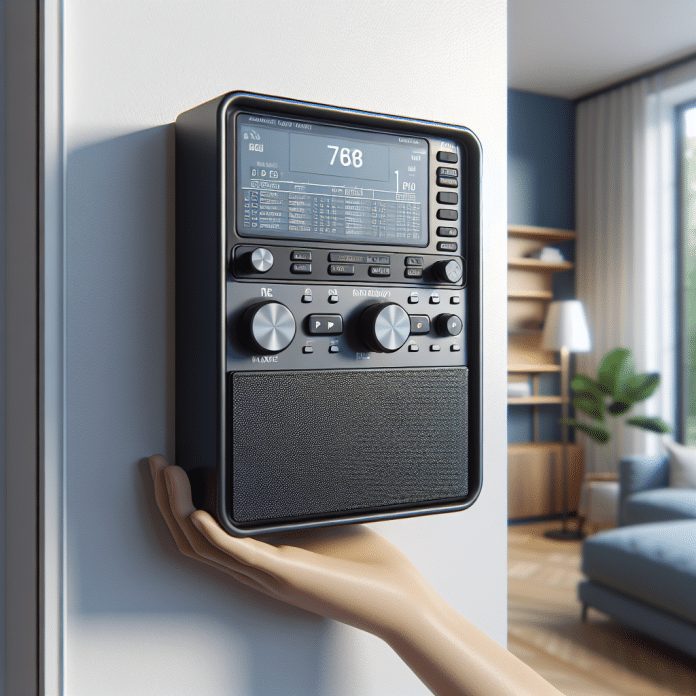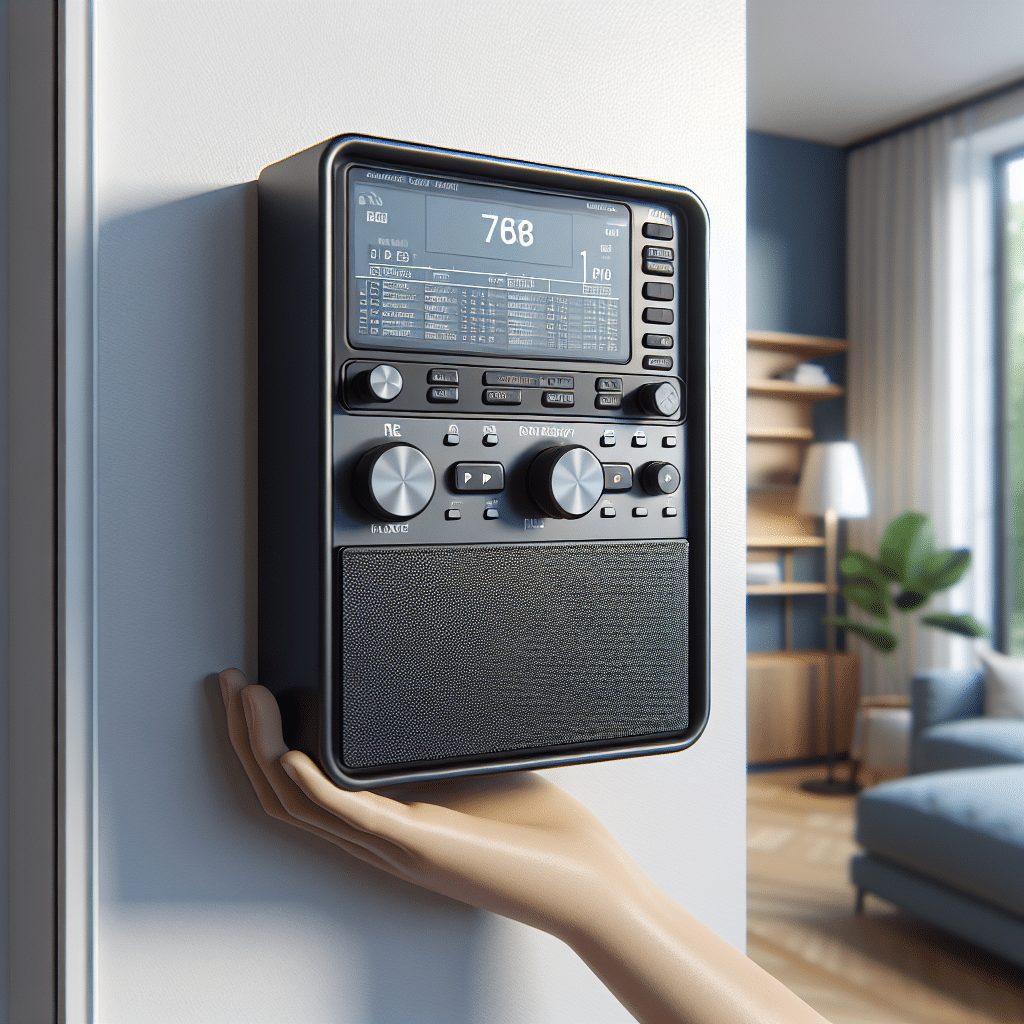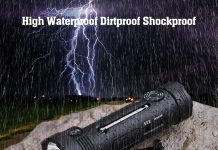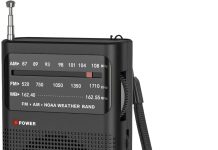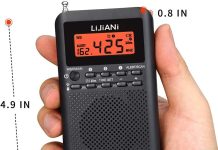Imagine never having to worry about being caught off guard during an emergency again. Picture having a constant, reliable source of information right in the comfort of your own home. If you’ve found yourself asking, “How can I install a permanent emergency radio in my home?”, then you’ve come to the right place. In this article, we will guide you through the simple steps to set up a permanent emergency radio, ensuring that you and your loved ones are always prepared for any unexpected event. So, sit back, relax, and let’s get started on this important journey to enhancing your home’s safety and security.
Review contents
Choosing the Right Emergency Radio
When it comes to choosing the right emergency radio for your home, there are several factors you need to consider. By understanding the different types of emergency radios, determining the coverage range, and considering battery and power options, you can make an informed decision.
Understanding the Different Types of Emergency Radios
There are various types of emergency radios available on the market, each with its own features and capabilities. The most common types include AM/FM radios, weather radios, and two-way radios. AM/FM radios provide general entertainment and emergency broadcast information, while weather radios are specifically designed to receive NOAA weather alerts. Two-way radios, also known as walkie-talkies, enable communication between multiple users in range.
Determining the Coverage Range
Coverage range is an essential consideration when choosing an emergency radio. The range refers to the distance over which the radio can receive and transmit signals effectively. This is determined by factors such as the power output of the radio and the terrain in your area. If you live in a rural or mountainous region, you may need a radio with a longer range to ensure reliable communication in emergency situations.
Considering Battery and Power Options
During an emergency, reliable power sources are crucial for your emergency radio. Battery-powered radios are a popular choice since they can operate even during power outages. It’s important to choose a radio that uses standard batteries or rechargeable ones. Additionally, some emergency radios offer alternative power options such as hand crank chargers or solar panels, which can be extremely useful when other power sources are not available.
Finding the Ideal Location
Once you’ve selected the appropriate emergency radio, the next step is to find the ideal location for installation. Evaluating signal strength, avoiding interference, and considering safety and accessibility are key factors to consider.
Evaluating Signal Strength
Signal strength plays a vital role in the performance of your emergency radio. Find a location in your home that provides optimal signal reception for the intended purpose of the radio. This could be near a window or in an area with an unobstructed view of the sky if you’re using a weather radio. By ensuring a strong signal, you can ensure uninterrupted communication during critical situations.
Avoiding Interference
Interference from other electronic devices can affect the performance of your emergency radio. To minimize interference, keep your emergency radio away from electronics such as televisions, computers, and cell phones. Additionally, thick walls and other physical barriers can weaken the radio signal, so consider the layout of your home when choosing the installation location.
Considering Safety and Accessibility
It is crucial to choose a location that is both safe and easily accessible during an emergency. The ideal location should be easily visible and reachable by all members of your household. Avoid areas with obstructions or potential hazards that may hinder access to the emergency radio. Additionally, ensure that the radio is installed securely to prevent accidental damage or disconnection.
Mounting and Installation
Properly mounting and installing your emergency radio is essential to ensure its stability and functionality. Take the following steps to secure the wall mount, set up an antenna, and connect the power source effectively.
Securing the Wall Mount
If your emergency radio comes with a wall mount, carefully follow the manufacturer’s instructions to securely attach it to the desired location. Use the appropriate screws and anchors to ensure that the mount is stable. It’s important to choose a sturdy wall that can support the weight of the radio.
Setting up an Antenna
An antenna can greatly enhance the reception and transmission capabilities of your emergency radio. Follow the instructions provided with the radio to properly install the antenna. If necessary, position the antenna in a way that maximizes signal strength by pointing it towards the nearest transmitter or open space.
Connecting the Power Source
Connect your emergency radio to a reliable power source according to the manufacturer’s instructions. This could involve plugging it into a wall outlet, utilizing battery backup, connecting it to a solar power system, or even using a generator. Ensure that the power source is easily accessible and regularly check the connection to avoid any disruptions in power supply.
Configuring the Emergency Radio
After the installation is complete, it’s important to configure your emergency radio correctly. Follow these steps to set the correct channels, adjust volume and sensitivity, and enable alert notifications.
Setting the Correct Channels
Depending on the type of emergency radio you have, it may offer different channels for specific purposes. For example, weather radios have dedicated NOAA Weather Radio channels, while two-way radios have their own frequency bands. Consult the user manual to identify the appropriate channels for your needs and program them into your radio.
Adjusting Volume and Sensitivity
To ensure clear and audible communication, adjust the volume and sensitivity settings on your emergency radio. Experiment with different levels to find the optimum settings for your surroundings. Be mindful of any background noise or potential interference that may affect the audio quality.
Enabling Alert Notifications
Emergency radios often feature alert notifications to provide timely information about severe weather, natural disasters, or other emergencies. Enable these notifications and ensure that they are set to the desired level of urgency. Familiarize yourself with the different types of alerts and their corresponding signals to stay informed during critical situations.
Testing and Regular Maintenance
Once your emergency radio is set up and configured, it’s crucial to regularly test and maintain it to ensure proper functioning when you need it most.
Performing Initial Testing
After installation, conduct initial tests to verify the performance of your emergency radio. Test different channels, run audio checks, and simulate emergency scenarios to ensure everything is working as expected. Identify any issues or weak spots and address them promptly.
Establishing Maintenance Routine
Regular maintenance is essential to keep your emergency radio in excellent working condition. Clean the radio and antenna regularly to prevent dust accumulation, which can affect signal strength. Also, inspect the cables and connections for any signs of wear or damage. Set a maintenance schedule to ensure that all components are functioning optimally.
Updating Channels and Software
Stay up to date with the latest emergency channels and software updates for your radio. Periodically check for any available channel or firmware updates and follow the manufacturer’s instructions to install them. This ensures that you have access to the most accurate and current information during emergencies.
Ensuring Backup Power
Power outages may occur during emergencies, so it’s crucial to have backup power options for your emergency radio. Utilize battery backup, consider solar power, and have a plan for connecting to a generator.
Using Battery Backup
Invest in a reliable battery backup system to ensure uninterrupted power supply for your emergency radio. This ensures that the radio remains operational even during extended power outages. Regularly test and replace batteries to maintain their optimal performance.
Considering Solar Power
Solar power can be an excellent backup option for your emergency radio. Install solar panels in a location that receives ample sunlight, preferably away from any obstructions. Connect the radio to the solar power system so that it charges the batteries or directly powers the radio during sunny days.
Connecting to a Generator
If you have a generator as part of your backup power plan, ensure that it can power your emergency radio as well. Have the necessary cords and connections ready to easily link the radio to the generator. Test this setup periodically to ensure compatibility and functionality.
Expanding Radio Communication
In certain situations, it may be necessary to expand your radio communication capabilities beyond a single emergency radio. Explore options such as connecting external antennas, adding repeaters or boosters, and incorporating two-way radios to enhance communication range and coverage.
Connecting External Antennas
In areas with weak signal strength, connecting an external antenna can significantly improve reception and transmission. Consult an expert or refer to the manufacturer’s guidelines to identify the compatible external antenna for your emergency radio. Properly install and position the antenna to maximize its effectiveness.
Adding Repeaters or Boosters
Repeaters or boosters can extend the range of your emergency radio, allowing for communication over longer distances. These devices amplify the radio signal, overcoming obstacles or long distances that might otherwise limit communication. Consider adding repeaters or boosters strategically to expand the coverage area of your radio network.
Incorporating Two-Way Radios
For improved communication among members of your household or community, consider incorporating two-way radios into your emergency preparedness plan. Two-way radios enable simultaneous communication between multiple users and can be particularly useful during search and rescue operations or coordinating emergency response efforts.
Getting Licensed for Ham Radio
To further expand your emergency communication options, consider getting licensed for a Ham Radio. Understanding Ham Radio licensing, selecting the right equipment, and preparing for the licensing exam are important steps to take.
Understanding Ham Radio Licensing
Ham Radio requires individuals to obtain an Amateur Radio license issued by the Federal Communications Commission (FCC). Becoming licensed allows you to operate on designated Ham Radio frequencies and use more powerful equipment. Research the licensing requirements in your country or region and familiarize yourself with the application process.
Selecting the Right Equipment
Once you are licensed, you can choose from a wide variety of Ham Radio equipment available in the market. Consider factors such as frequency bands, power output, and features when selecting the right equipment that aligns with your emergency communication needs. Consult experienced Ham Radio operators for recommendations and guidance.
Preparing for the Licensing Exam
To obtain your Ham Radio license, you will need to pass an exam that assesses your knowledge of radio operation, regulations, and basic electronics. Study the relevant resources, practice sample exam questions, and consider joining a local Ham Radio club or online community for additional support. Being prepared will increase your chances of success.
Considerations for Emergency Preparedness
Installing a permanent emergency radio is just one aspect of emergency preparedness. Taking certain considerations into account ensures that you are well-prepared for any unforeseen circumstances that may arise.
Creating an Emergency Communication Plan
Develop an emergency communication plan that includes protocols for contacting family members, neighbors, or local authorities during emergencies. Establish designated meeting points, communication frequencies or channels, and assign responsibilities to each member of your household. Regularly review and practice this plan to ensure everyone is familiar with the procedures.
Stockpiling Extra Batteries and Supplies
Ensure you have an ample supply of spare batteries for your emergency radios. Stockpile batteries for each type of radio you own, taking into account their specific power requirements. Additionally, consider storing other essential supplies like flashlights, first aid kits, and non-perishable food items for any emergency situations that may arise.
Staying Informed with NOAA Weather Radio
NOAA Weather Radio is a valuable resource for staying informed about weather conditions, forecasts, and any potential hazards in your area. Ensure that your emergency radio is capable of receiving NOAA Weather Radio alerts and set it to the appropriate channel. Stay tuned to weather updates and follow any evacuation or safety instructions provided.
Maintenance and Troubleshooting
Regular maintenance and troubleshooting of your emergency radio are essential to ensure its optimal performance. Follow these steps to keep it clean, identify and resolve common issues, and seek professional help when needed.
Keeping the Radio Clean and Dust-Free
Dust and debris can accumulate on your emergency radio, affecting its performance over time. Regularly clean the exterior and internal components using a soft cloth and compressed air. Follow the manufacturer’s instructions regarding suitable cleaning agents and techniques to avoid damaging the radio.
Identifying and Resolving Common Issues
Familiarize yourself with common issues that may arise with your emergency radio and learn how to resolve them. Problems such as poor reception, distorted audio, or malfunctioning buttons can often be fixed with basic troubleshooting techniques. Consult the user manual, online resources, or seek advice from fellow radio enthusiasts to troubleshoot effectively.
Considering Professional Help
If you encounter complex issues or are unsure about resolving a problem with your emergency radio, it’s advisable to seek professional help. Reach out to authorized service centers or experienced technicians who specialize in radio repairs. They have the expertise and tools necessary to diagnose and fix more advanced issues, ensuring your emergency radio remains in optimal condition.
Installing a permanent emergency radio in your home provides peace of mind and an invaluable communication tool during unexpected situations. By understanding the different types of emergency radios, determining the coverage range, considering battery and power options, and following proper installation and maintenance procedures, you can be well-prepared to stay connected and informed in times of emergency. Remember to review and update your emergency communication plan regularly, stockpile necessary supplies, and stay up to date with the latest weather and emergency alerts. With these precautions in place, you can confidently face any emergency that comes your way.

